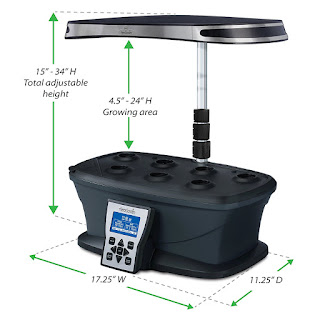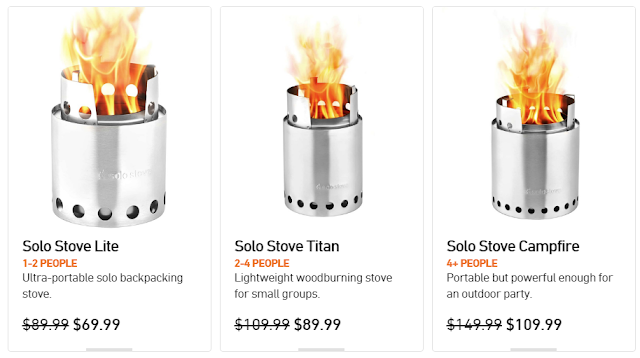Let's say your BOL is miles away from your normal residence and you don't have a caretaker watching over it. If you plant a normal garden at your BOL, you're going to need to make (at least) weekly trips out to it in order to keep the weeds and insects under control. If one of your goals is to keep the location discrete, each of those trips is going to whittle away at its anonymity.
Or what if you don't have a BOL and have decided to “bug in” or shelter in place, but don't have enough land for a garden? City dwellers may also have Home Owners' Association (HOA) restrictions or insane city codes that would prevent the use of lawn space for growing food.
Or maybe you have a good BOL, but you'd like to have an extra layer of supplies close at hand. If it is rural, there's a good chance that it is close to land owned by some level of government (county, state, or federal park or reserve, state or national forest, road or water right-of-way) that may be a good spot for some GG.
What Exactly is Guerilla Gardening?
Wikipedia sums it up as “the act of gardening on land that the gardeners do not have the legal rights to cultivate”. While the idea has recently been picked up by “activists”, it's not a new one. People have been growing marijuana on state/federal land for decades, and even when I was in high school the local “growers” knew that the banks of rivers and streams (almost always government-owned as a right of way) had the most fertile soil and plenty of water. Two centuries ago, there was Johnny Appleseed planting apple tree nurseries as he traveled, spreading a valuable resource (cider apples) along what was then the frontier. As a prepper, the idea of GG is closer to “stocking the pond” for future possible use than setting up a garden that needs to be tended on someone else's land. Any produce that you don't get a chance to harvest will be appreciated by the local wildlife, which may improve your chances of hunting that wildlife later.
Wikipedia sums it up as “the act of gardening on land that the gardeners do not have the legal rights to cultivate”. While the idea has recently been picked up by “activists”, it's not a new one. People have been growing marijuana on state/federal land for decades, and even when I was in high school the local “growers” knew that the banks of rivers and streams (almost always government-owned as a right of way) had the most fertile soil and plenty of water. Two centuries ago, there was Johnny Appleseed planting apple tree nurseries as he traveled, spreading a valuable resource (cider apples) along what was then the frontier. As a prepper, the idea of GG is closer to “stocking the pond” for future possible use than setting up a garden that needs to be tended on someone else's land. Any produce that you don't get a chance to harvest will be appreciated by the local wildlife, which may improve your chances of hunting that wildlife later.
Here are a few GG ideas to ponder:
- Planting climbing vines or plants that require support along fences. A woven-wire or chain-link fence would provide plenty of support for climbing gourds or pole beans.
- Another blogger has explored the idea of grafting fruit-bearing limbs onto weed trees in the empty spaces formed by a highway clover-leaf. He's even offered scions to graft and time if anyone in his area is interested. This is a bit more advanced, but grafting isn't impossible to learn and it is a form of permaculture that requires very little attention after the first year or so.
- Perennial or “walking” onions are hardy plants that go dormant in the winter and sprout again in the spring. They “walk” by producing seed heads at the top of their stalk that gets heavy enough to make it bend until the seeds touch the ground, planting another generation a few feet away from the original plant.
- Rural road ditches around here used to be full of wild plums and elderberries, but aggressive clearing operations have provided slightly safer roads at the cost of freely available fruit. Clusters of plum or small nut trees placed far enough back from the road would have a good chance of surviving to produce fruit.
- There are people who GG with wildlife. Pheasant and quail used to be common around here (until the DNR brought back the bobcats and mountain lions) and a few folks are raising and releasing them to try to get colonies reestablished. Commercial hatcheries offer chicks of a few different species every spring, so it may be something to consider.
Things to consider if you're
contemplating taking up GG.
- Since the land isn't yours, you have no “legal” right to the produce. Don't call the sheriff if you find someone else picking the fruit, as the result won't be worth the hassle.
- Since most GG takes place on public (government-owned) land, anyone can harvest the produce. If you don't get there on time, don't expect it to be waiting for you.
- Pick plants that will blend in with the background. Planting tomatoes with bright red fruits next to a well-traveled road isn't going to work out too well. Look for species with colors and leaves that are close to that of the weeds in the area, so they aren't obvious to everyone passing by.
- Choose perennials over annuals whenever you can; the require less maintenance and they tend to spread out on their own.
- An apple tree in the middle of a wooded area is going to be a lot easier to tend than a small plot of peppers or peas in the same place. It will also have a better chance of being ignored by others, since it's just another tree.
- Root crops like garlic, carrots, beets, turnips, etc. are easy to hide since they don't have visible fruits. They also tend to be hardy and fairly low maintenance, so once they're planted you don't have to pay them much attention.
- The modern “activists” that are talking about GG have never read about the “tragedy of the commons” and know very little history. If people know something is free, they will try to use as much of it as they possibly can to better their own life without any regard for the lives of others. Greed is an intrinsic human trait: just look at any toddler that has to share her toys.
- Stocking a lake or pond with fish caught somewhere else is a tough one. Governments frown on “bucket biologists” who introduce non-native fish into “their” waters, and the fines can be astronomical. Around here the state will stock a private lake for you as long as you open it to the public... which defeats the purpose of stocking the lake.
I'm going to use some of the seeds I
got in my big bag of vegetable seeds to see what will grow in the
hills around the family farm. The soil is pretty poor, but I know of
a few spots where squash and cucumbers should do well. If nothing
else, I'll be feeding the deer and maybe a few of them will stick
around for hunting season.























